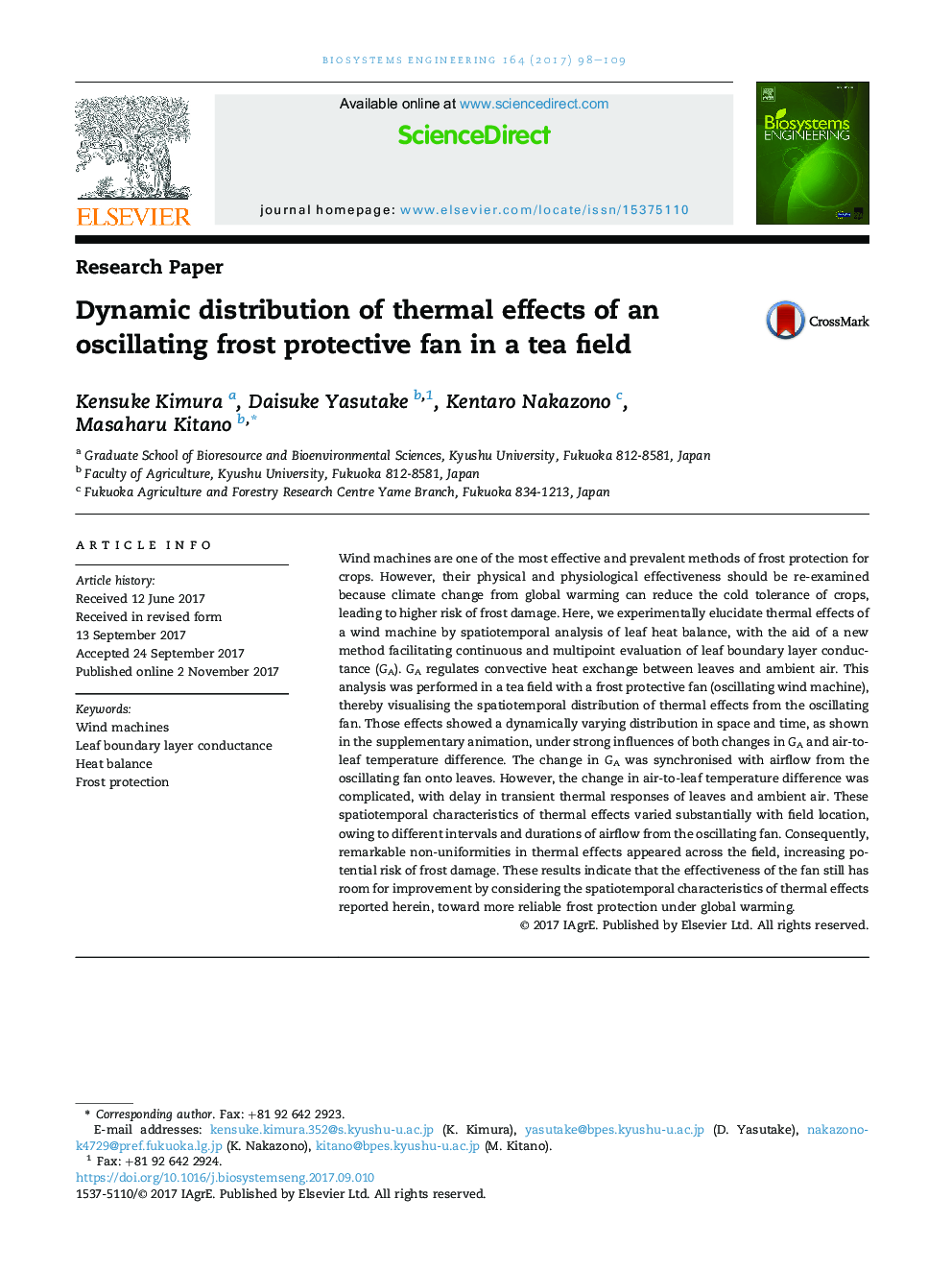| Article ID | Journal | Published Year | Pages | File Type |
|---|---|---|---|---|
| 8054911 | Biosystems Engineering | 2017 | 12 Pages |
Abstract
Wind machines are one of the most effective and prevalent methods of frost protection for crops. However, their physical and physiological effectiveness should be re-examined because climate change from global warming can reduce the cold tolerance of crops, leading to higher risk of frost damage. Here, we experimentally elucidate thermal effects of a wind machine by spatiotemporal analysis of leaf heat balance, with the aid of a new method facilitating continuous and multipoint evaluation of leaf boundary layer conductance (GA). GA regulates convective heat exchange between leaves and ambient air. This analysis was performed in a tea field with a frost protective fan (oscillating wind machine), thereby visualising the spatiotemporal distribution of thermal effects from the oscillating fan. Those effects showed a dynamically varying distribution in space and time, as shown in the supplementary animation, under strong influences of both changes in GA and air-to-leaf temperature difference. The change in GA was synchronised with airflow from the oscillating fan onto leaves. However, the change in air-to-leaf temperature difference was complicated, with delay in transient thermal responses of leaves and ambient air. These spatiotemporal characteristics of thermal effects varied substantially with field location, owing to different intervals and durations of airflow from the oscillating fan. Consequently, remarkable non-uniformities in thermal effects appeared across the field, increasing potential risk of frost damage. These results indicate that the effectiveness of the fan still has room for improvement by considering the spatiotemporal characteristics of thermal effects reported herein, toward more reliable frost protection under global warming.
Keywords
Related Topics
Physical Sciences and Engineering
Engineering
Control and Systems Engineering
Authors
Kensuke Kimura, Daisuke Yasutake, Kentaro Nakazono, Masaharu Kitano,
